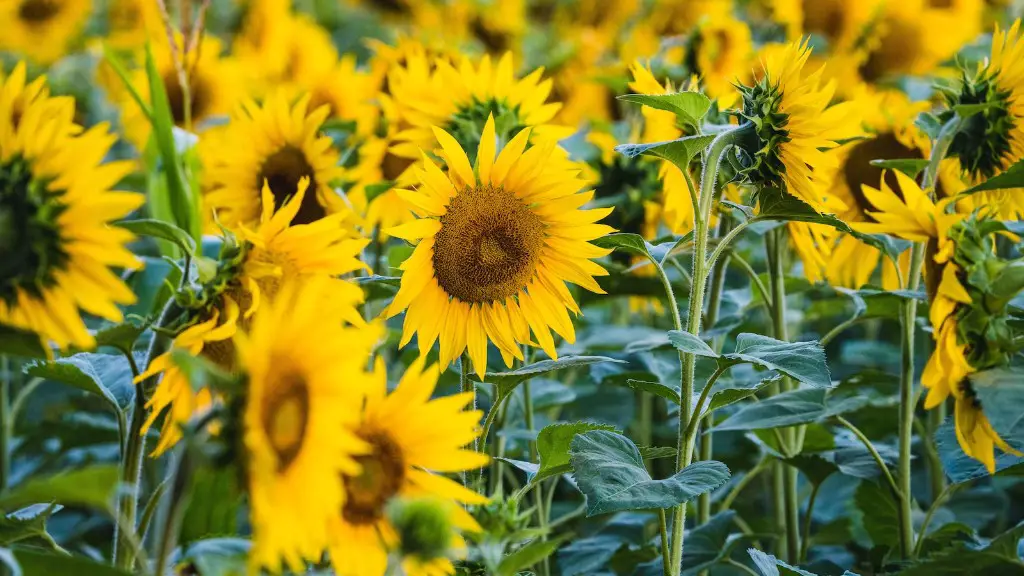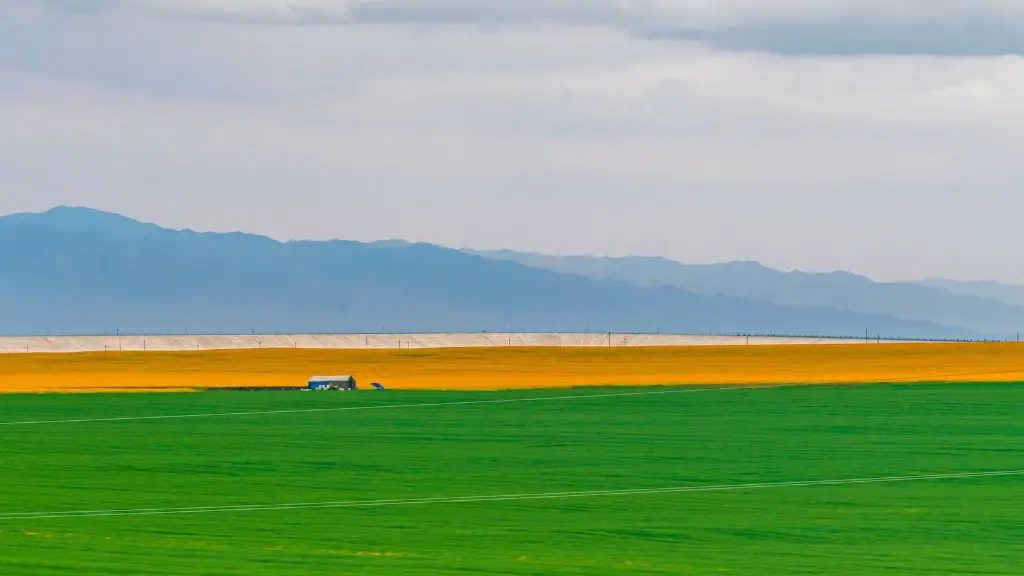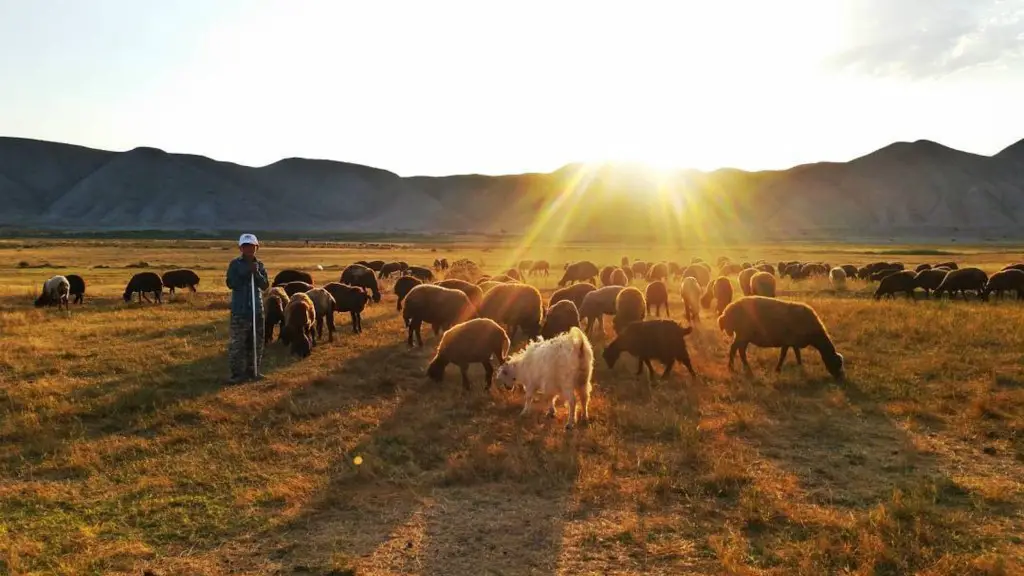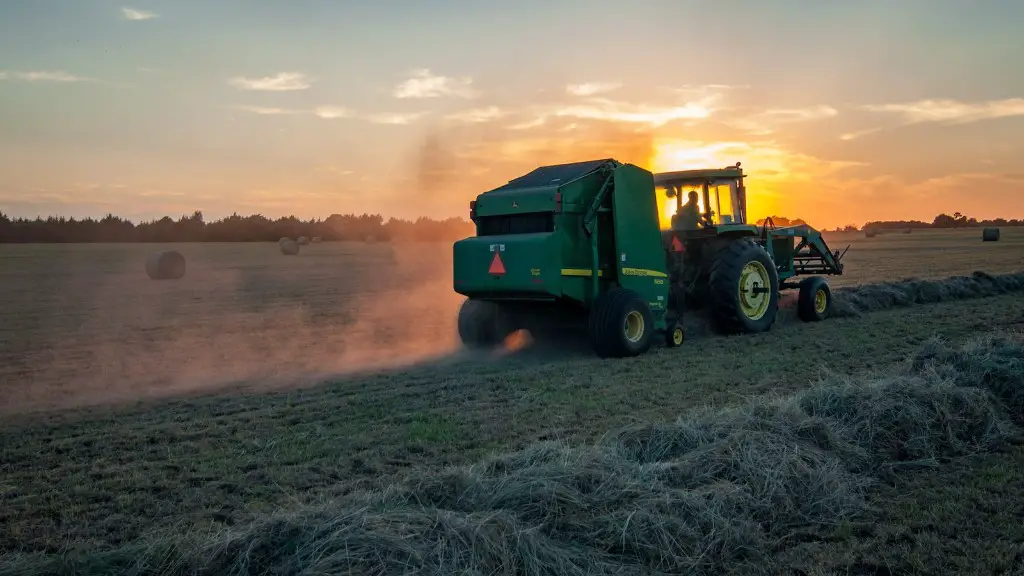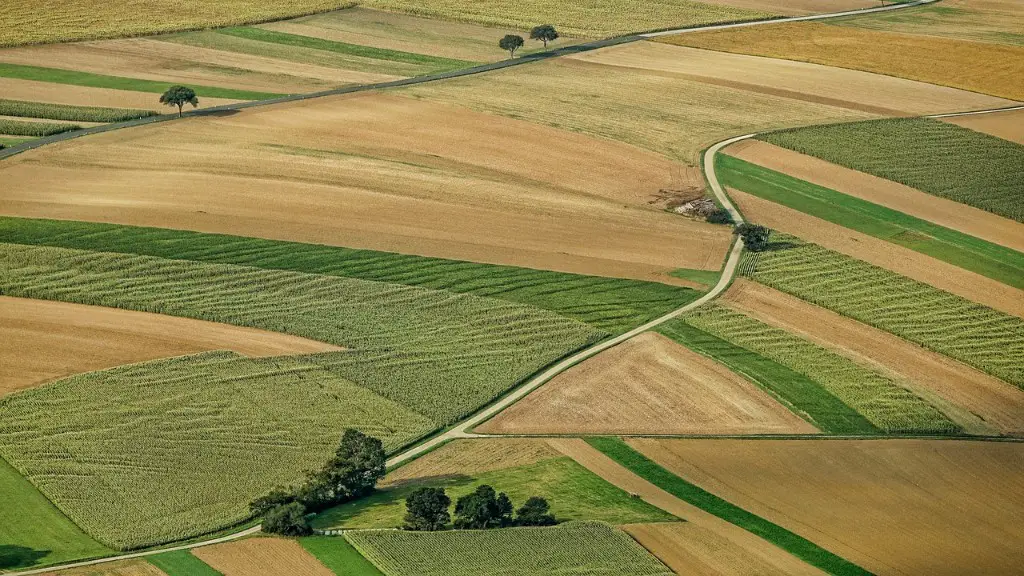Monoculture farming is an increasingly popular agricultural practice around the world. In broad strokes, monoculture involves growing a single crop species on the same land year after year. There are a number of advantages to monoculture farming, but there are also several potential drawbacks. In this article, we’ll explore both the benefits and drawbacks of monoculture, and evaluate its impact on the global agricultural system.
One of the major advantages of monoculture farming is increased efficiency. By growing one crop species, fertilizers, herbicides, and other inputs can be tailored specifically to the crop’s needs. This can lead to higher yields and a more efficient use of resources. In addition, monoculture allows for mechanization, which can help reduce labor costs. Finally, monoculture helps farmers mitigate risks due to weather and other external factors, since they don’t have to worry about other crops getting ruined if one crop fails.
However, there are potential drawbacks to monoculture as well. One of the main ones is that monoculture can lead to soil degradation. If a single crop is repeatedly grown on the same land, with the same inputs, the soil can become depleted of useful nutrients and the soil structure can be disrupted. This can lead to lower yields and a decrease in soil fertility. In addition, monoculture makes the system more vulnerable to pests and disease outbreaks, since there are no other species to serve as “sentinels” and signal an impending infestation.
Monoculture is also criticized for being environmentally unsustainable. Some argue that monoculture systems are “monotonous” and lack biodiversity. This could lead to a disruption in natural predator-prey relationships, as well as an increased risk of pest outbreaks. Also, monoculture puts added stress on water resources, since the same crop species will require the same amount of water from year to year.
Overall, monoculture is a viable agricultural practice, but it does have some potential drawbacks. Farmers should weigh these factors against the potential benefits before deciding whether to adopt a monoculture system. Finally, farmers who do decide to adopt monoculture should monitor their systems closely and adjust inputs as needed, in order to prevent soil degradation and maximize yields.
History of Monoculture
Monoculture has emerged as a dominant agricultural practice in recent decades, but it has a long and storied history. As far back as the 10th century AD, farmers in the Andes were using monoculture to grow potatoes on their terraces. Monoculture was also widely used throughout Europe during the Medieval period and the Renaissance, with large estates devoted to growing single crops like wheat or barley. Additionally, monoculture was used throughout colonial America, and continued to be used in parts of Asia and Africa as well.
In the modern era, monoculture has become increasingly popular, due to its potential for higher yields and improved efficiency. It is now used on a massive scale across the world, especially in the West, where it is the dominant agricultural practice for a wide range of crops. In addition, monoculture is often used in conjunction with industrial farming methods, which can further increase yields and efficiency.
Monoculture’s emergence as a pre-eminent agricultural practice has been largely beneficial, as it has helped improve food security and reduce hunger worldwide. However, it has also come with some negative environmental and social effects, as previously discussed. As such, it is important for farmers and policymakers to understand the history of monoculture, in order to properly evaluate its impact and mitigate any potential risks.
Globally Impacts of Monoculture
Despite its potential drawbacks, monoculture remains a popular agricultural practice today. In many parts of the world, it is seen as the best way to maximize yield and efficiency, while minimizing risk. As such, it has become a major driver of global agricultural systems and has had a substantial impact on food production.
One of the most significant impacts of monoculture has been an increase in global food production. Monoculture has allowed farmers to grow more food on less land, resulting in a greatly increased global food supply. This has helped improve food security and alleviate hunger in many parts of the world. Monoculture has also been instrumental in reducing poverty in many parts of the world, as increased food production has allowed people to lead better, more productive lives.
In addition, monoculture has allowed for more efficient use of land and resources. By growing a single crop species on the same land year after year, farmers can use fewer inputs and fewer resources overall. This can lead to more efficient use of land and improved environmental sustainability.
Finally, monoculture has also had a major economic impact. By increasing yields and reducing labor costs, monoculture has allowed farmers around the world to become more profitable. In turn, this has helped spur economic growth in many parts of the world and has helped to reduce poverty.
Mono-cultural Biodiversity
Monoculture has been criticized for its lack of biodiversity. By growing a single crop species on the same land, monoculture can disrupt natural predator-prey relationships and lead to a decrease in biodiversity. This can have negative effects on the local environment, making it more vulnerable to pests and disease.
However, monoculture can also have a positive effect on biodiversity. In some cases, monoculture systems have been modified to include a range of different crop species, allowing for a more diverse agricultural ecosystem. This can help to reduce the risk of pest outbreaks, while also reducing the strain on water resources and improving soil fertility.
Additionally, the lack of diversity in monoculture systems can be mitigated by adding buffer zones. Adding areas of natural habitat around the farm can help to protect local biodiversity, while also providing a refuge for migratory birds and other species. It can also help to preserve natural ecosystems and mitigate the environmental impact of monoculture farming.
Overall, monoculture does have some potential drawbacks, especially when it comes to biodiversity. However, with careful planning, farmers can use monoculture in a way that supports local biodiversity and mitigation of environmental impacts.
Impact of Pests and Diseases
Monoculture systems are vulnerable to outbreaks of pests and diseases. Since monoculture relies on growing a single crop species on the same land year after year, it can lead to a decrease in soil fertility, as well as an increased likelihood of pest and disease outbreaks. This can be especially problematic in areas where native insect populations are low, as pests will have no natural predators.
To reduce the risk of pests and diseases, farmers may choose to implement integrated pest management (IPM) strategies. IPM strategies involve identifying potential pests and diseases ahead of time, and taking steps to reduce the risk of an outbreak. These steps may include monitoring the crop for signs of pest activity, as well as using preventative treatments like insecticides, fungicides, and/or biological controls.
In addition, many farmers rely on crop rotation as a means of reducing the risk of pest and disease outbreaks. By rotating crops from year to year, farmers can reduce the risk of pests developing an immunity to the same inputs, as well as improve soil fertility and reduce the risk of soil degradation.
Finally, many farmers also rely on the use of genetically modified organisms (GMOs) as a means of reducing the risk of pest and disease outbreaks. By manipulating the genetics of the crop species, farmers can make it more resilient to pests and diseases, while also improving yield and efficiency.
Overall, monoculture systems can be vulnerable to pests and diseases, but by implementing IPM strategies and other preventative measures, farmers can reduce the risk. Finally, by rotating crops and using GMOs, farmers can further improve the sustainability of their monoculture systems.
